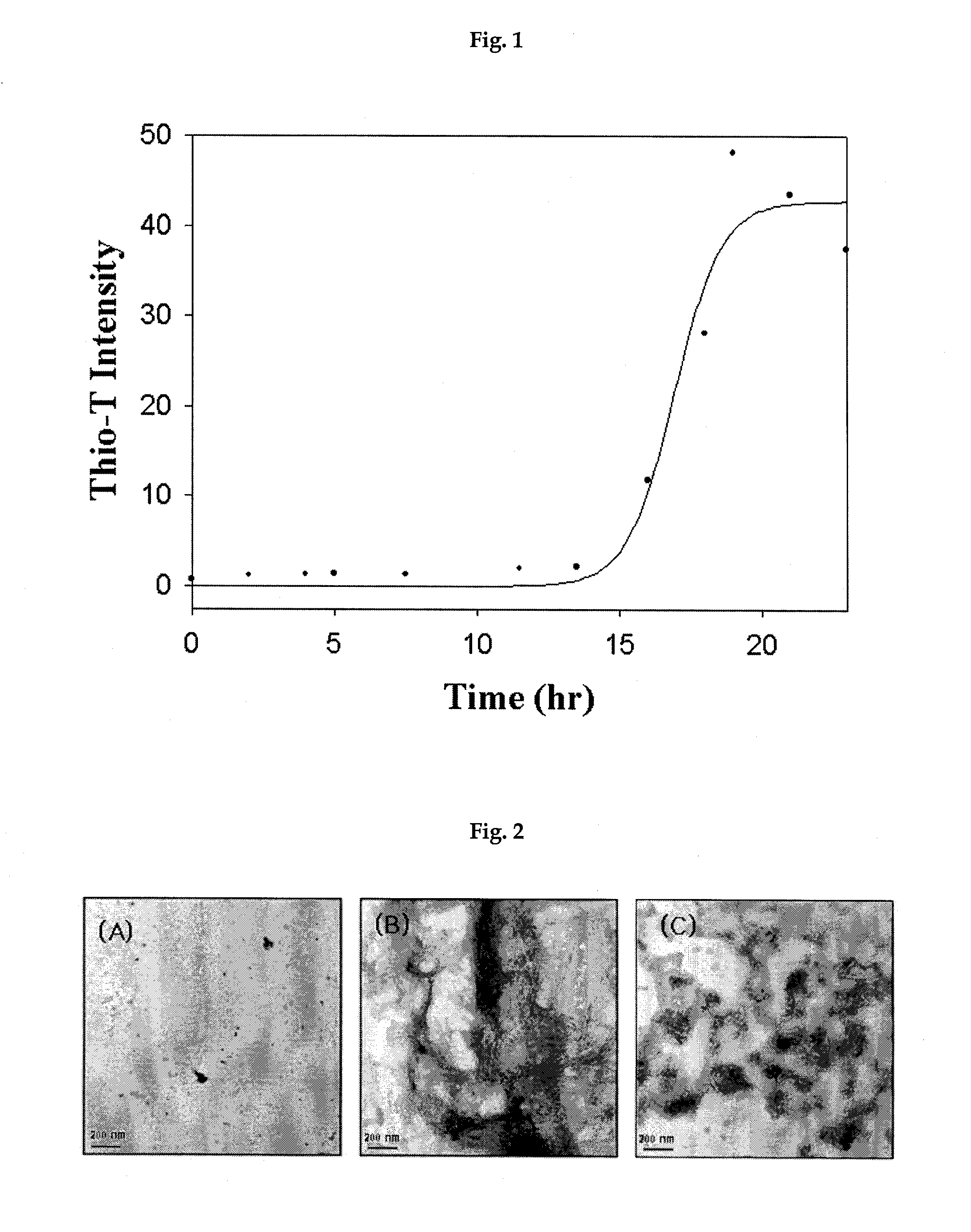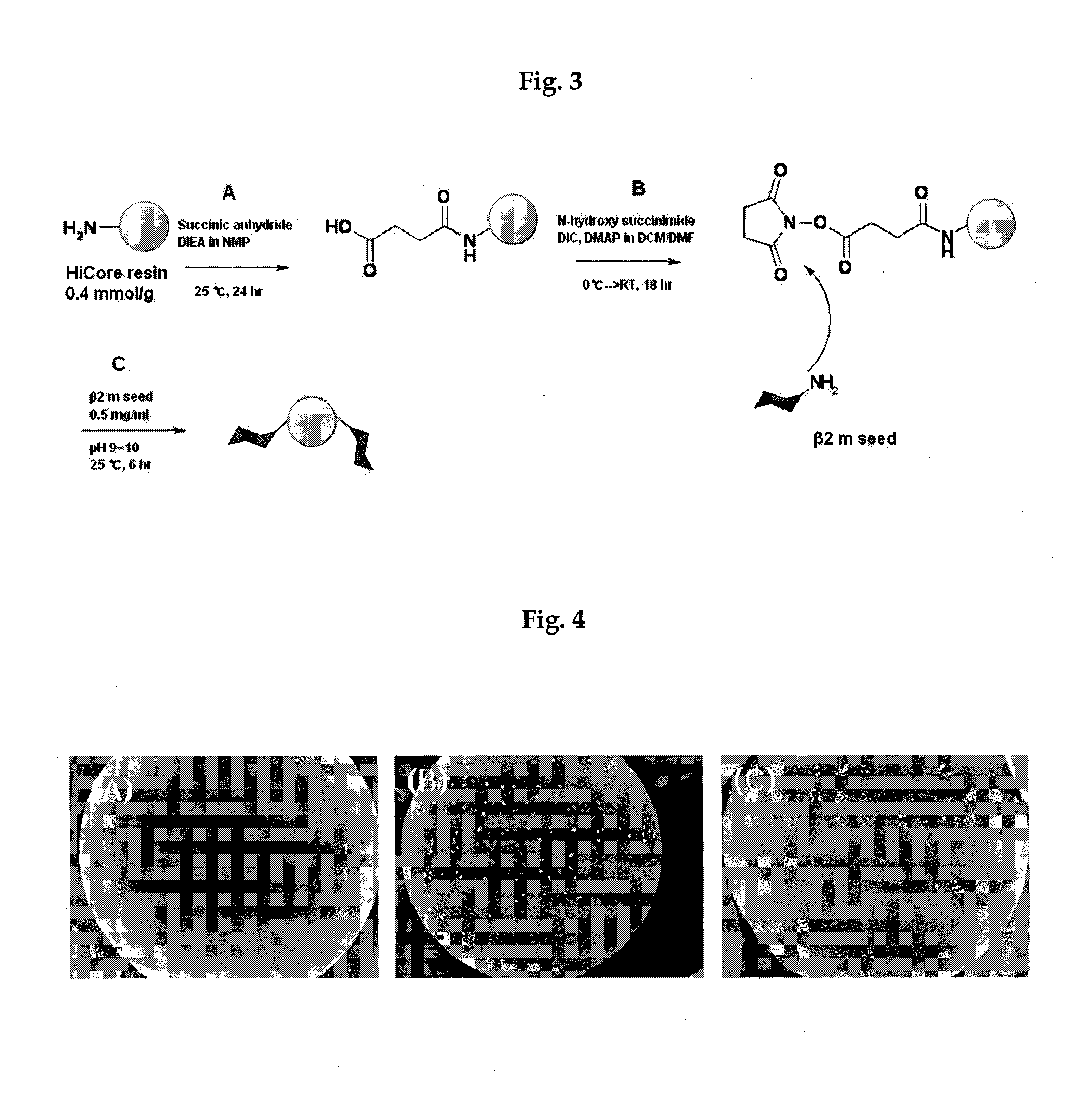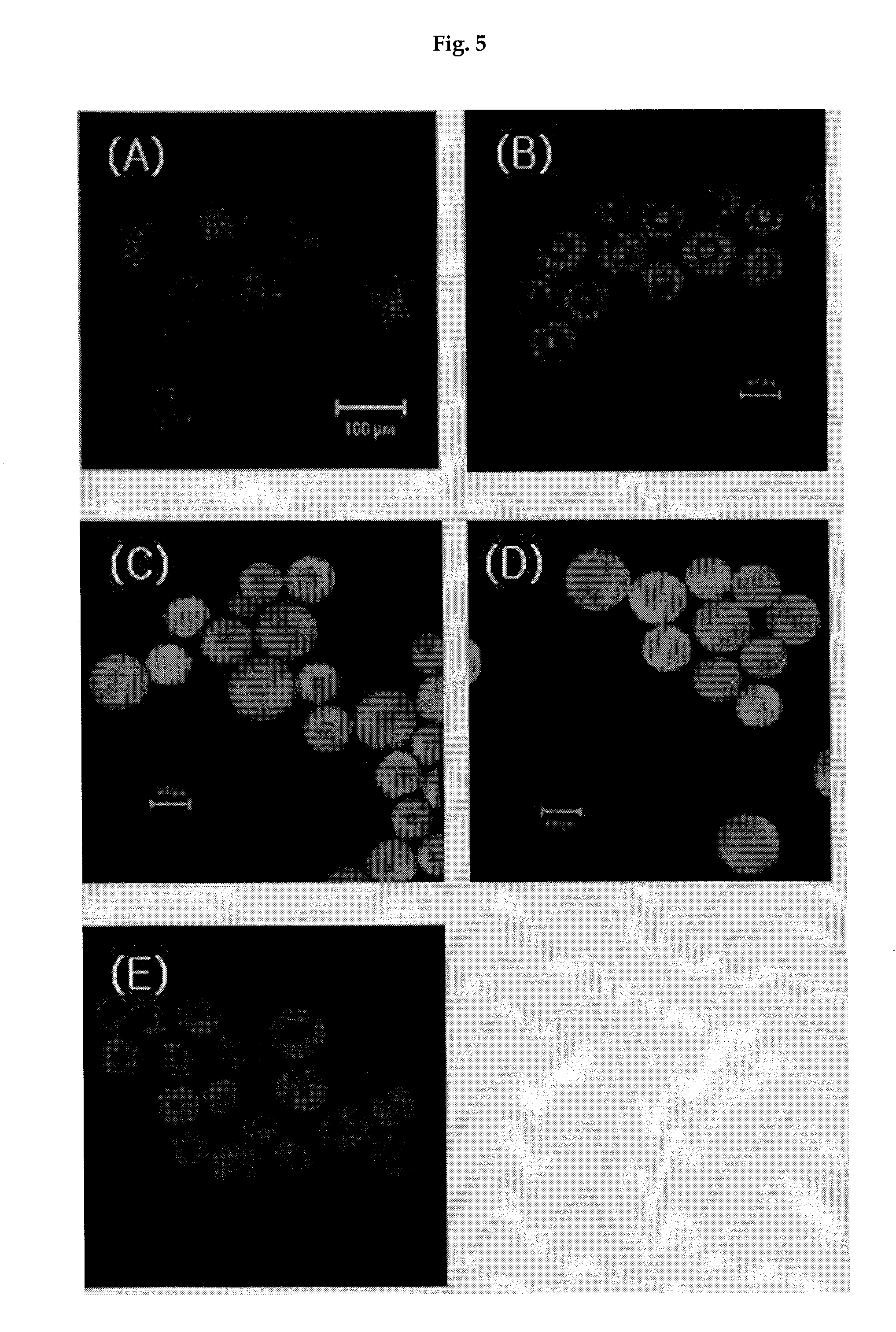Seed-conjugated polymer support
a polymer support and seed technology, applied in the field of seed-conjugated polymer support, can solve the problems of insufficient amount of removed -2-microglobulin, low removal efficiency of hemodialyser, and high cost of antibody production, so as to prevent or treat dialysis-related amyloidosis, and accumulate abnormal -2-microglobulin in vivo
- Summary
- Abstract
- Description
- Claims
- Application Information
AI Technical Summary
Benefits of technology
Problems solved by technology
Method used
Image
Examples
example 1
Preparation of β-2-Microglobulin Amyloid Seed to be Used as a Seed
[0039]1 mg / ml of purified β-2-microglobulin monomers were added to 20 mM of chloride phosphate buffer solution containing 0.15 M of sodium chloride at pH 2.5 and, then, amyloid formation reaction was proceeded at 37° C. for more than 2 weeks. The formation of amyloid fibrils was monitored by using thioflavin-T which is a fluorescent dye and widely used for measuring the degree of amyloid formation from proteins (FIG. 1). After sufficiently mature amyloids were confirmed, amyloid seeds with a size of about 10 nm were obtained by fragmentation of amyloids using sonication and fitration of the amyloid fragments (FIG. 2).
example 2
Preparation of a Polymer Support
[0040]Hicore resins (BeadTech, Inc., Seoul, Korea) which are used for supports for solid phase protein synthesis were employed as polymer supports. At first, the amine groups of Hicore beads were reacted with succinic anhydride in N-methyl-2-pyrrolidone at room temperature for 24 hours, thereby introducing carboxyl groups and, then, N-hydroxysuccinimide was introduced by reacting with N,N′-diisopropyl-carbodiimide under the catalyst of 4-dimethyl-aminopyridine. Dichloromethane and dimethylformamide were used as solvents. The reaction temperature was kept at 0° C. in an ice bath and, after 1 hour, the ice bath was removed and the reaction was proceeded at room temperature for 18 hours. After being activated as N-hydroxysuccinimide ester, polymer supports including chemically binded ligands were obtained by condensation reaction with amine groups of β-2-microglobulin seed prepared by sonication (FIG. 3).
example 3
Removal of β-2-Microglobulin in a Solvent by Using Seed-Conjugated Polymer Support
[0041]The seed-conjugated polymer beads of Example 2 were reacted with 1% BSA (bovine serum albumin) solution (0.4 mmol NH2 / g bead) at room temperature for 1 hour so as to minimize the non-specific protein adsorption at the surface of the polymer support. The thus treated beads were added to 200 ml of 20 mM chloride phosphate buffer solution (pH 7.5) containing 1 mg / ml of β-2-microglobulin and the reaction was proceeded in this condition. During the reaction at 37° C. in a stirred incubator, the amount of β-2-microglobulin bound to the seed with the lapse of time was measured. As a result, it was confirmed by quantitative and qualitative analyses that β-2-microglobulin was selectively bound to the seed-conjugated polymer bead, with the lapse of time. It was also confirmed that β-2-microglobulin was well bound to the polymer support, both at pH 6.5 and pH 7.0.
1) Qualitative Analysis by Fluorescence
[0042...
PUM
| Property | Measurement | Unit |
|---|---|---|
| Temperature | aaaaa | aaaaa |
| Time | aaaaa | aaaaa |
| Size | aaaaa | aaaaa |
Abstract
Description
Claims
Application Information
 Login to View More
Login to View More - R&D
- Intellectual Property
- Life Sciences
- Materials
- Tech Scout
- Unparalleled Data Quality
- Higher Quality Content
- 60% Fewer Hallucinations
Browse by: Latest US Patents, China's latest patents, Technical Efficacy Thesaurus, Application Domain, Technology Topic, Popular Technical Reports.
© 2025 PatSnap. All rights reserved.Legal|Privacy policy|Modern Slavery Act Transparency Statement|Sitemap|About US| Contact US: help@patsnap.com



